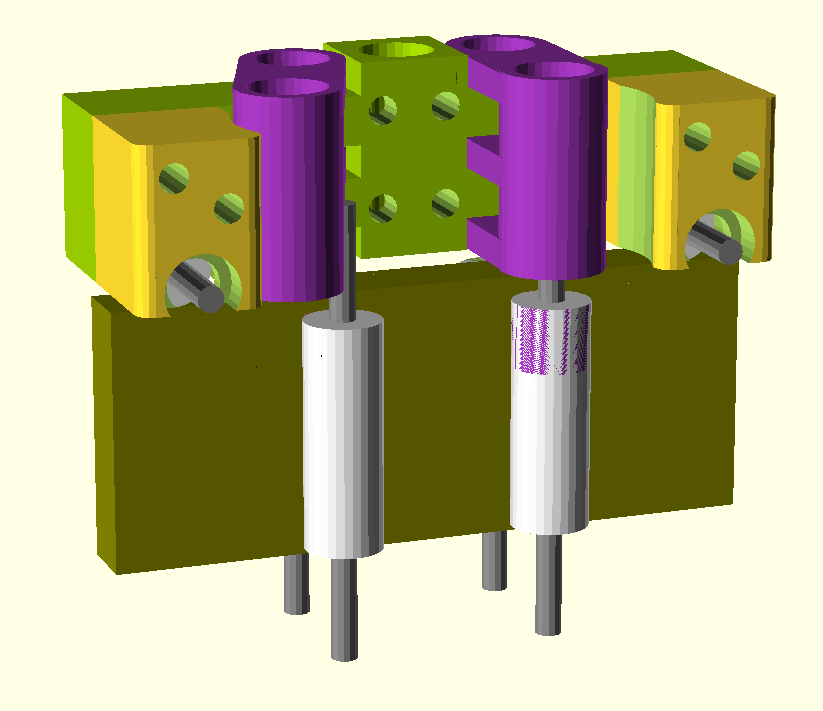Overview
The mechanics of the robot are divided into three key sections:
- Train
- Moves the robot to the required plot and provides movement along the working plot.
- Crane
- Moves the tool head up / down and forwards / backwards over the plot.
- Toolhead
- Consists of all the devices that interact with the soil and plants.
Train

The train has been designed to run on the simple wooden rail. To this end the train must be able to traverse the rail even when it is uneven and should always have good traction against it so that the soil can be worked.
The first train design hugs the rail with six rollers. Two above the rail and two on each side. The four side rollers are all driven and one side is sprung to tightly grip the rail. This can be seen in the diagram to the right.
Crane
Once the train has got the robot to the correct plot it is then up to the crane in conjunction with the train to carry out the required tool movements.
Toolhead
- Soil manipulation
- Digging / ploughing
- Patting / compacting
- Hoeing
Electronics
The electronics for the system is split into two parts. The low level motion control and sensor reading is processed on an Arduino board and the high level decisions are made on a Raspberry Pi board. The Arduino operates as a slave to the Raspberry Pi and the two boards communicate using a simple high level protocol connected via USB (serial).
The advantage of this split is that all of the real time control can be built and stabilised in the Arduino leaving the more powerful Raspberry Pi available for faster pace development of the plant tending software without consideration for the underlying control system.
Low Level (Arduino)
- Controls stepper motors and servos
- Reads sensors
High Level (Raspberry Pi)
- Stores plot database
- Runs scheduler
- Compiles toolpaths
- Commands Arduino